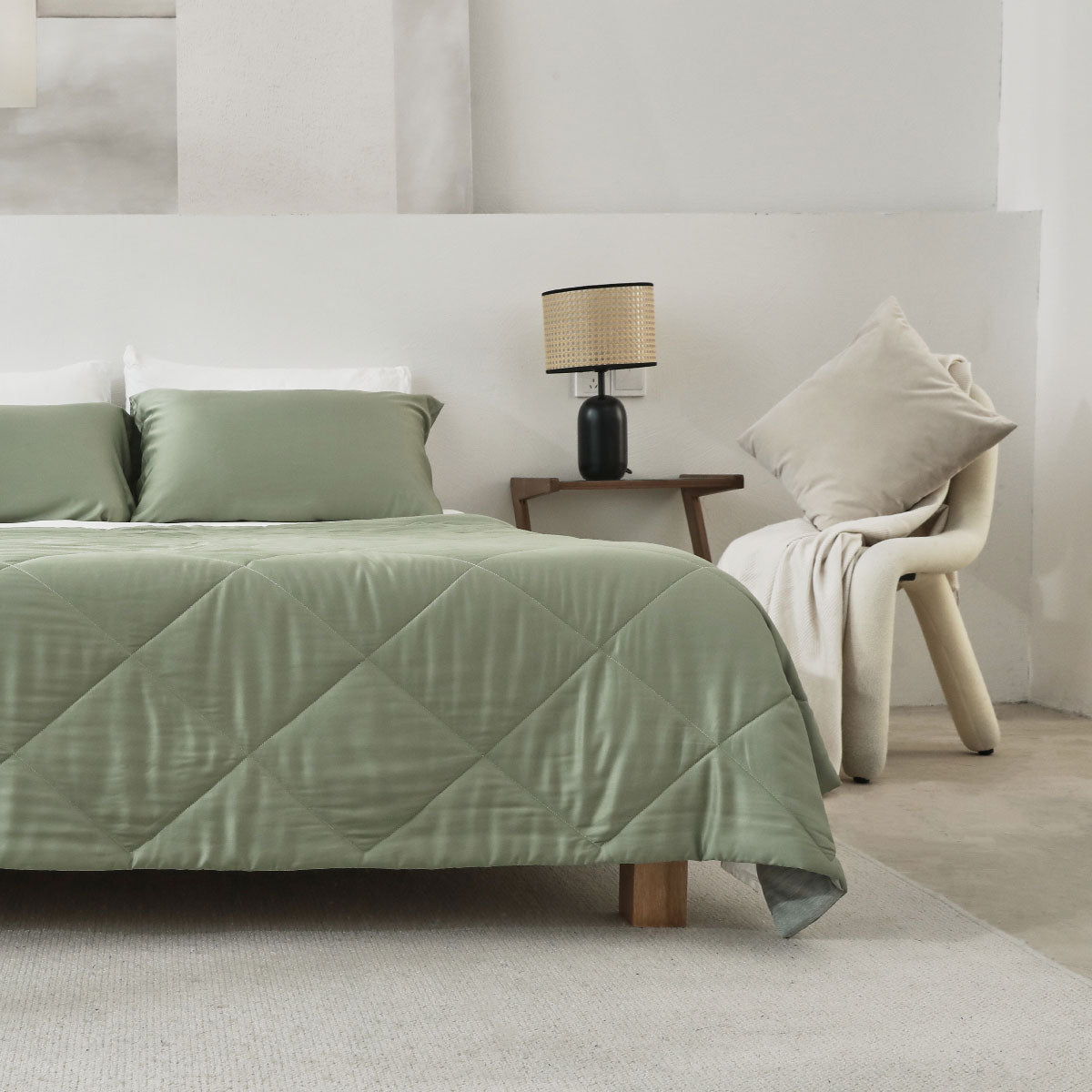Getting a good night's sleep can feel like a well-deserved reward after a hard day's work. However, it's important to know that your body temperature goes through significant fluctuations during sleep. By understanding these changes, you can create the ideal sleeping environment to promote restful and comfortable sleep. In this article, we'll explain the relationship between sleep and temperature, and give you some tips to help optimize your sleep environment based on your body's temperature changes.
The relationship between sleep and body temperature
 source: sleep advisor
source: sleep advisor
As homeothermal creatures, humans are able to maintain a stable range of body temperature by regulating the balance of heat absorption, production, and loss. The body has two temperature zones that it regulates: the temperature and the peripheral temperature.
When the core temperature rises too high, blood vessels in the skin dilate, allowing for a large flow of blood into the skin and for heat to be dissipated and lost. This is why people often feel cool to the touch when they sleep. When a person is too cold, the blood vessels contract, conserving heat to maintain warmth.
During sleep, most people begin with non-rapid eye movement (NREM) sleep, which progresses from light to deep. After 60-90 minutes, a period of rapid eye movement (REM) sleep begins and typically lasts about 30 minutes. These periods alternate throughout the night, recurring 4-5 times and lasting around half an hour each.
High body temperatures can make people feel more alert and active, while lower body temperatures can make them feel calmer and more relaxed. This explains why some people find it challenging to fall asleep when their brains are in a hyperactive state. Studies have shown that a significant drop in body temperature during sleep results in better quality deep sleep. The lowest body temperature in adults is usually around 5am, about two hours before waking up. This could explain why some people feel hotter the longer they sleep when they suffer from insomnia.

The relationship between sleep and environmental temperature
The temperature of your bedroom can have a significant impact on the quality of your sleep. A room that is too hot or too cold can make it difficult to fall asleep, leading to a restless night. A cool, quiet room is often more conducive to a restful sleep and can also lead to a deeper sleep, as it allows your body temperature to drop to its optimal level.
Conversely, a room that is too cold can cause your blood vessels to contract, conserving heat and leading to a rise in body temperature, which can have a negative effect on sleep quality. Research has shown that prior warmth can improve sleep, particularly during non-rapid eye movement (NREM) sleep, so finding the right balance of warmth and coolness in your bedroom is crucial for better rest.
By understanding how temperature affects sleep, you can create a more comfortable sleeping environment to promote restful and restorative sleep. So, aim to keep your bedroom at a comfortable temperature, cool enough to promote a drop in body temperature, but warm enough to prevent discomfort and ensure a good night's sleep.
How to regulate the body and bedroom temperature?
Here are some tips to help regulate your body temperature and create a comfortable sleeping environment:
-
Take a hot shower: A hot shower before bedtime can help to raise your body temperature, which can then drop and create drowsiness. Just make sure to give yourself enough time (60-90 minutes) between bathing and sleeping so that your body temperature can drop and prepare for sleep.
-
Drink warm milk: A glass of warm milk before bed can help to relax your body and mind, and raise your body temperature. This can then drop and create a state of sleepiness.
-
Get aerobic exercise: A 20-30 minute session of aerobic exercise can raise your body temperature and keep it up for up to 4-5 hours before it drops. This can help to improve the quality of your sleep.
-
Use a fan or air conditioning: In hot climates, using a fan or air conditioning can help to create a more comfortable sleeping environment. A fan can keep air circulating in the room, while air conditioning can keep the room cool and maintain a stable temperature.
-
Choose the right bedding: Mattresses and bedding can play a big role in keeping your body temperature at a comfortable level. Look for blankets with sweat-wicking and cooling technology, or bedding materials such as bamboo, silk, and cotton that are naturally breathable and help to keep you cool and comfortable.
By following these tips, you can regulate your body temperature and create a more comfortable sleeping environment for a better night's sleep.

Conclusion
Understanding how temperature affects sleep is crucial to achieving a restful and comfortable night's sleep. An environment that is too hot or too cold can make it challenging to fall asleep or stay asleep. Sleep and health are closely interconnected, and good quality sleep not only regulates the physiological functions of the body but also maintains the function of the nervous system in the brain.
Join our Zonli Community for more informative sleep solution. Also a little surprise in Zonli community, MONTHLY giveaway and prized contest will not upset you.

